Kia ora, Malo’elelei, Bula Vinaka, Namaste, Greetings and Talofa lava.
I want to thank you for the privilege to speak. I am honoured and blessed. I understand today as a bicentennial celebration of women’s ministry.
Born and bred in Samoa I grew up to witness and experience weaving as part and parcel of a woman’s life. I have witnessed my grandmother shared her knowledge and skills learnt over the years to many women. Indeed this is how the art of weaving lives. The theme today thus evoke memories of roles and responsibilities of the weaving guild and the rituals involved. Rituals are especially brought to the fore with the weaving of what we Samoans call the ‘fine mat’; so called because of the fine threads of pandanus used in its making. But the art itself begins with the planting of the pandanus tree, the preparation of the leaves, the rituals associated with the process and the completion of a work.
The religio-cultural aspect associated with the rituals are witness to a cosmology that undergirds these actions. Samoans understand a sacred relationship exists in human–human, human- creation and human divine interactions. This is the ‘va-tapuia’ (sacred relationship/sacred space) that inform boundaries, protocol and how one relates to the other.
Weaving in the Samoan context is a communal activity. It is labour intensive. To weave a fine mat of finest quality may take several years. Such feats are displayed publically and acknowledged with the phrase ‘Sao fa’alalelei”, a response which could be interpreted as “a silence of admiration” “to marvel at” a work well done, and speaks of the dignity of women involved.
Weaving therefore evoke for me imageries that are multidimensional, from nurturing, community building, gender roles, singleness of purpose, relationships, planting, security, being fruitful hard work, diligence, continuity and much more.
The gospel today describes two parables. The first one speaks of a man who scattered the seeds and left them to grow. The soil itself took care of the seeds growth. The text suggests the seeds grew very well providing an enormous harvest. The second parable speaks of another man who planted a mustard seed. The seed grew to become a large tree offering home for the birds. Both parables speak of planting, of growth, of security in the knowledge of fruitful labour. I note only men were doing the planting!
I want to make some observations and relate these to our theme. Firstly, in the context of weaving and in relation to our theme, I can relate the seeds to our skills, talents, gifts, experiences, knowledge and understandings as individuals and as members of our respective organisations and tikanga. If we are able to meaningfully weave all these into a common goal, it is possible to create, as with a Samoan fine mat, something that we can be proud of. It does not matter how many seeds we sow or have sown. What matters is our willingness to be engaged in it and an openness to weave together our skills and understandings. If weaving as in sowing and planting is a continuous process, it is possible to create something new, and something we in the end will marvel at. We may never know what this, is until we find that willingness to weave together.
Secondly, and I think this is important, I want to point out the caring and nurturing aspect reflected in our text. The “soil” took care of the seeds’ growth. The birds find security in the grown mustard tree. This connection of the soil/land, seeds, harvest, to life embraces the importance of building positive, responsive and respectful relationships encapsulated in the va- tapuia I spoke about above.
Relationship building is a key strand for our weaving into the future. Building positive and responsive relationships within our respective organisations, ministries and tikanga allow us to view situations and contexts from much broader perspectives. This empowers us to explore who we are as individuals and as tikanga and how we can meaningfully contribute. Multiple perspectives best provide valid and reliable assessments for decision making in any field of work including our work as women in weaving into the future. From our text, two approaches to planting suggest not one perspective or idea can be considered better than another. Both outcomes of the two approaches were the same, growth benefitting others. Weaving together through respectful relationships and multiple lenses help us nurture and promote our understanding to accept our own and others unique contributions in how to weave.
I want to close by referring to the work of a well-known Samoan the late Fetauimalemau Mataa’fa. Although not an Anglican, in my book, she is a baptised Christian who contributed through her various ministries as a teacher, an educator, wife and mother, community worker, politician and diplomat. Space does not allow time for a detailed study. But her work dealt with women and children both locally and abroad. For her services to education in the Pacific and services on behalf of and for women; Her services for Children’s Health as well as Care of the nursing mothers; Her role in the development of Women in Samoa and the Pacific she was honoured by Various universities in NZ and United States and the Government of Samoa receiving Samoa’s highest award. It is obvious that this mother has contributed so meaningfully at various levels and contexts ranging from her own small island Samoa, to Aotearoa New Zealand and United States? How was she able to do this?
My answer: she was able to scatter seeds of her skills, knowledge through building relationships that last. And in this scattering she was able to weave together different perspectives for a common purpose: better opportunities for others especially women and children. She would not have been able to achieve anything without an undergirding understanding of the value of respecting the dignity of persons, of cultures within a nation. She has done this with her trust in her “soil”-her God.
It is this kind of woman I can say, as we say of the Samoan fine mat when finished, “SAO FA’ALALELEI”- silence in admiration, marveling at a life well lived; grown on soil that nourishes, who has scattered the seeds and others have reaped, who wove together her experiences, her learnings, to produce such a life as gift to others.






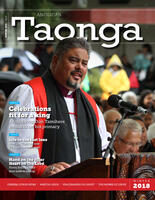
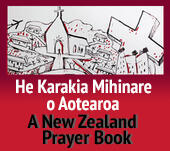
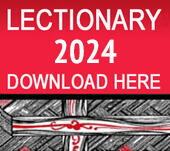

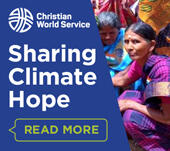
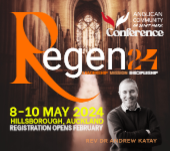
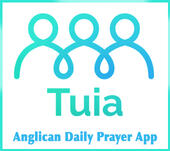




Comments
Log in or create a user account to comment.